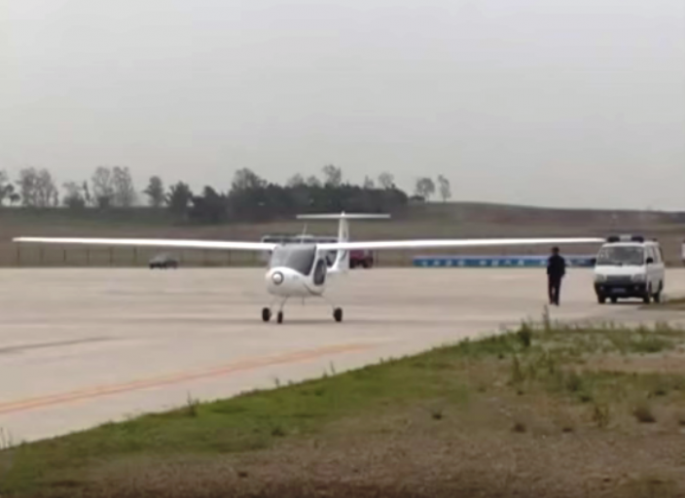China is readying its first electric airplane for mass production after successfully completing a series of low-temperature flight tests, China Daily reported.
According to the report, the two-seater RX1E can fly at a maximum speed of 120 kilometers per hour for about 45 to 60 minutes, after an hour and a half of charging.
The report said that only four of the aircraft are currently in use, and another 20 units will be built this year.
The RX1E was developed by Liaoning Ruixiang General Aviation Co. Ltd. in northeast China, and could be used for a wide range of purposes such as aerial photography, police patrol, flight training, sightseeing and meteorology.
The aircraft, which is made of carbon fiber composite material, has several selling advantages such as low operating cost, convenience, and no carbon emissions from the plane.
The Civil Aviation Administration of China gave the aircraft its airworthiness certificate early last year.
"Unlike military aircraft and commercial jets, there are certain criteria that an electric plane must have before given permission to fly," said Yang Fengtian, chief designer of RX1E, said during an interview with CCTV.com last year. "The plane has to be light enough, and the batteries need to be efficient and reliable, and overall it has to be cost-effective to be mass produced."
Since the test model was introduced in 2013, the RX1E has made about 240 hours of trial flights. According to Yang, the batteries have been improved to boost the flying hours, and the framework of the plane did not change much during the testing period.
Last year, two units were delivered to customers to show that the plane is fully ready, the report said.
"The RX1E will significantly push the development of China's general aviation industry, because the bottlenecks facing the current general aviation field are not just airspace resources, but also the lack of low-cost planes like the RX1E," said Yang.



























